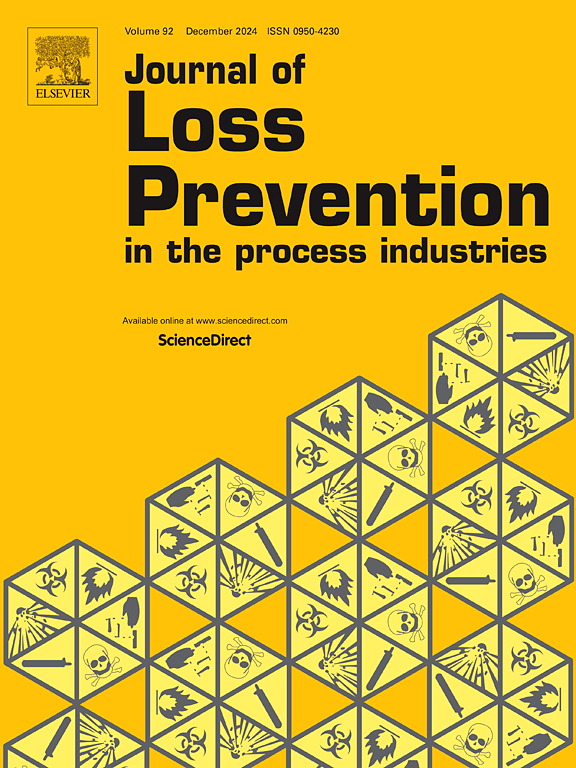Extending the dynamic and dependent tree theory (D2T2) to safety barriers: An application to an offshore fire deluge system
IF 3.6
3区 工程技术
Q2 ENGINEERING, CHEMICAL
Journal of Loss Prevention in The Process Industries
Pub Date : 2025-01-08
DOI:10.1016/j.jlp.2025.105545
引用次数: 0
Abstract
Fault Tree (FT) Analysis is still one of the most common approaches for conducting reliability analysis of complex systems. However, it conceals several limitations such as the assumption of independent events and inability to model modern maintenance strategies in its basic form. To enhance FT analysis and overcome these limitations, Dynamic and Dependent Tree Theory, , has been recently introduced. This algorithm is based on the integration of Petri Nets, Markov models, and Binary Decision Diagram with the FT. Despite its effectiveness, its generalizability for different case studies needs to be explored. This is especially true for the application to safety barriers, which spend most of their time in a standby state. Thus, this paper aims to provide an extension of the approach to further prove its capabilities and adopt it for safety barriers. To this end, the framework is applied to an offshore fire deluge system considering an availability analysis and a reliability analysis for the standby and operational phase respectively. The proposed modified framework could be used by maintenance engineers and managers to conduct reliability analysis of safety barriers, along with testing multiple maintenance strategies for their components.
将动态依赖树理论(D2T2)扩展到安全屏障:在海上消防雨淋系统中的应用
故障树分析仍然是进行复杂系统可靠性分析最常用的方法之一。然而,它隐藏了一些限制,例如独立事件的假设和无法以其基本形式为现代维护策略建模。为了增强FT分析并克服这些局限性,最近引入了动态和依赖树理论D2T2。该算法基于Petri网、马尔可夫模型和二元决策图与FT的集成。尽管其有效性,但其在不同案例研究中的泛化性需要探索。对于安全屏障的应用程序尤其如此,因为它们大部分时间处于待机状态。因此,本文旨在提供D2T2方法的扩展,以进一步证明其能力并将其用于安全屏障。为此,将该框架应用于海上消防雨淋系统,分别考虑备用阶段和运行阶段的可用性分析和可靠性分析。维修工程师和管理人员可以使用修改后的框架对安全屏障进行可靠性分析,并测试其组件的多种维修策略。
本文章由计算机程序翻译,如有差异,请以英文原文为准。
求助全文
约1分钟内获得全文
求助全文
来源期刊
CiteScore
7.20
自引率
14.30%
发文量
226
审稿时长
52 days
期刊介绍:
The broad scope of the journal is process safety. Process safety is defined as the prevention and mitigation of process-related injuries and damage arising from process incidents involving fire, explosion and toxic release. Such undesired events occur in the process industries during the use, storage, manufacture, handling, and transportation of highly hazardous chemicals.

 求助内容:
求助内容: 应助结果提醒方式:
应助结果提醒方式:


